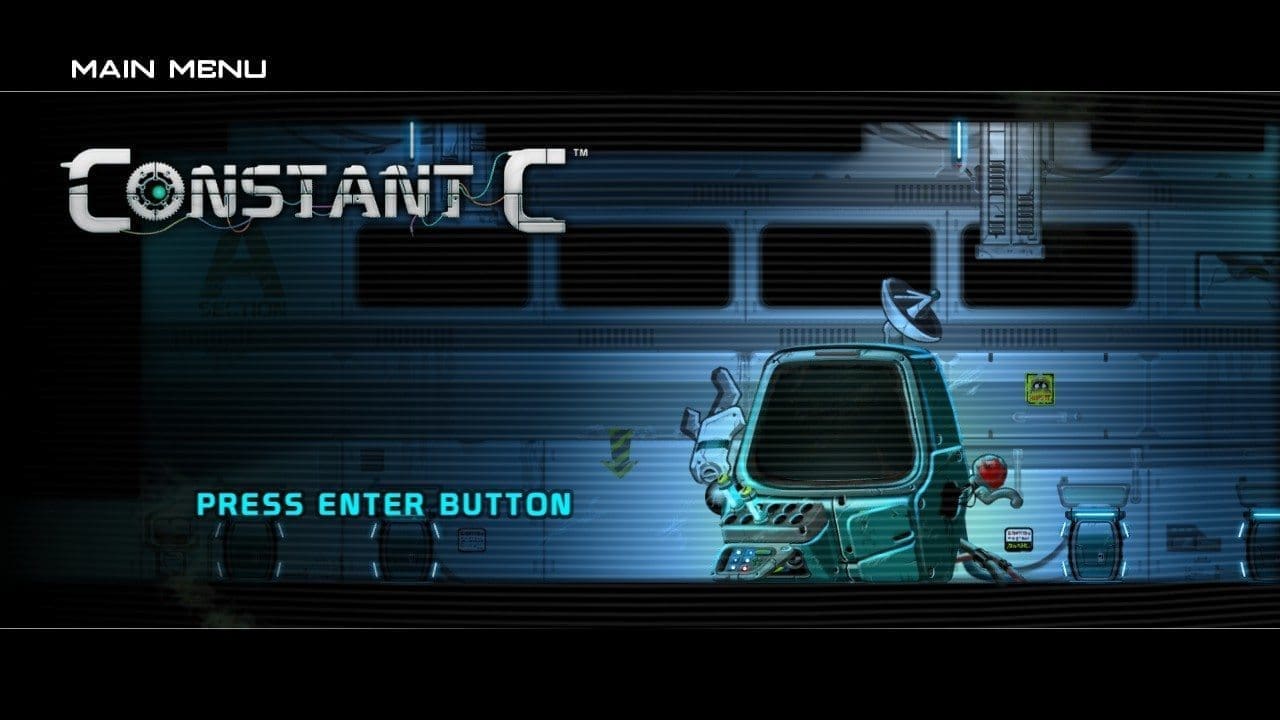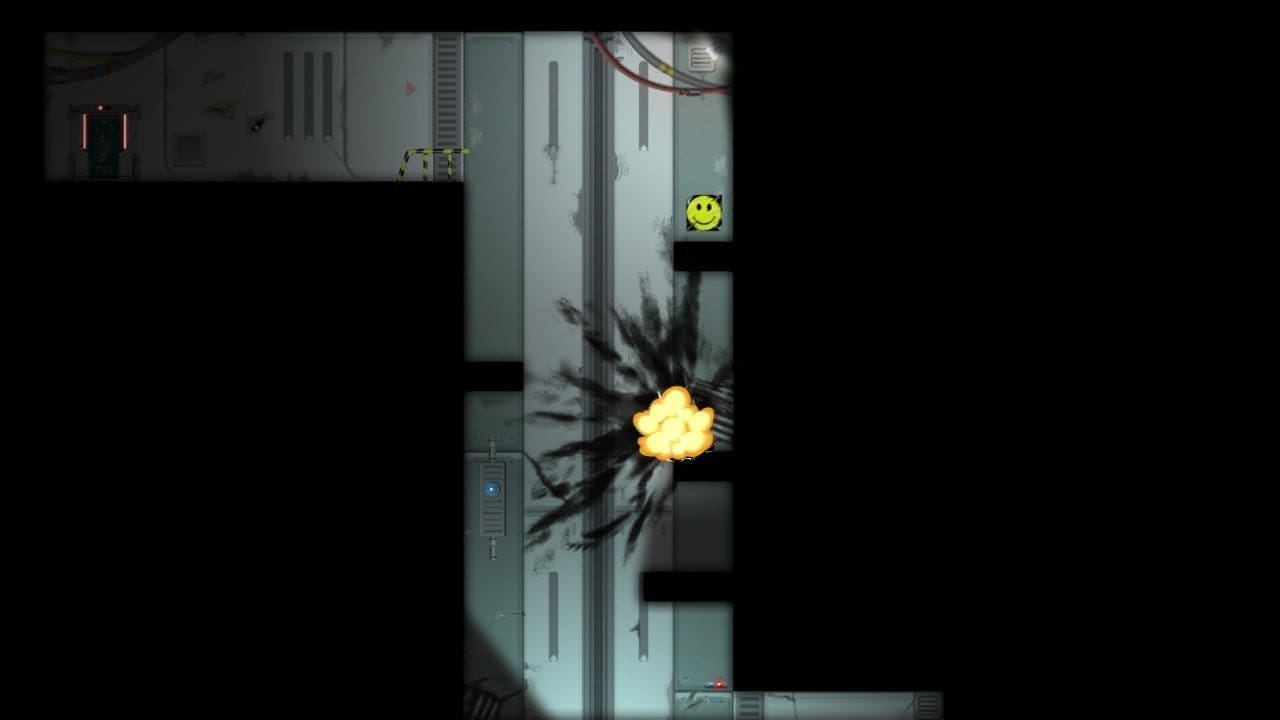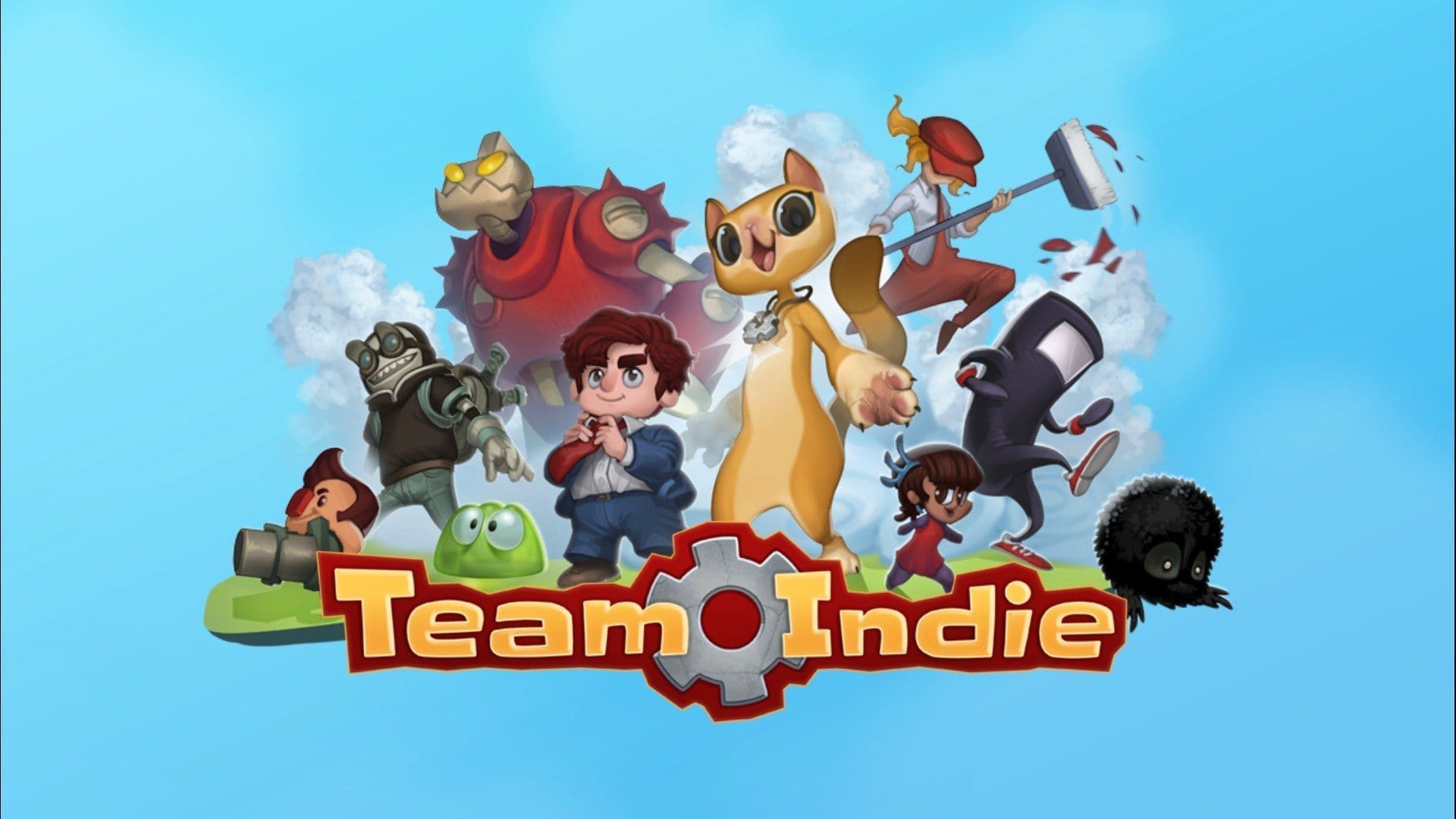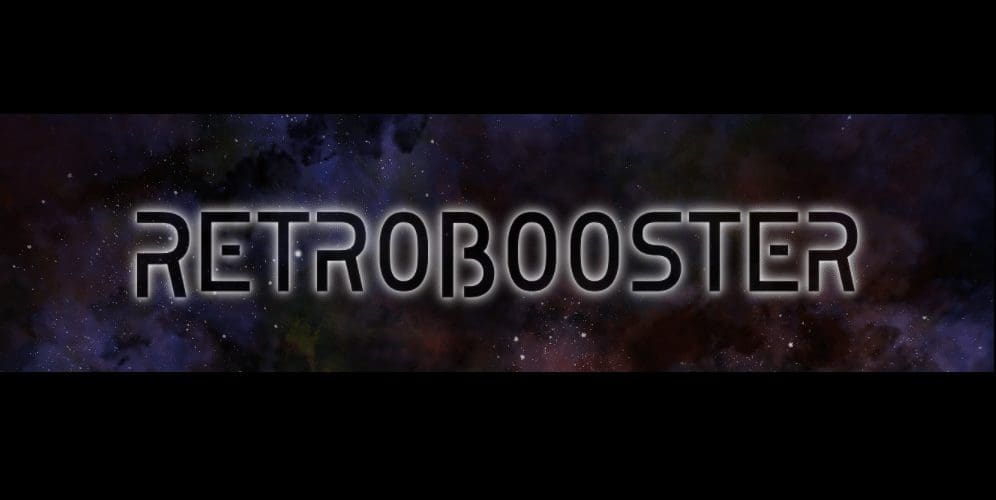
Constant C is a puzzle platformer that uses time as a game mechanic. Much like the wildly successful puzzle platformer that messed around with time, Braid, this game will have you scratching your head wondering how it’s even possible to beat some of its levels. Unlike Braid, Constant C is less about manipulating time and more about restricting it. Instead of rewinding the clock, you get to decide when and where it gets to tick.
Gameplay
The basic idea of Constant C is that time has stopped, and you are the only one who can make it move again. As you navigate the game world, you will see boxes frozen in mid-air, moving platforms stopped dead in their tracks, and lights stopped mid-flicker. As your character moves close to something, it springs back to life. A box frozen mid-fall that looks like a convenient platform will start falling again as soon as you get close. The majority of the gameplay involves figuring out where you need to approach these objects from to get them to start moving into the right spot. Since making something fall or stand still would get old rather quick, you are given a few extra toys in your arsenal as the game progresses.

In addition to freezing and unfreezing objects in time, you are given the ability to manipulate the direction of gravity. Initially this comes from a set of switches placed around each level, each turning gravity to face a specific direction. After a few levels of that, you are given a gravity remote that lets you flip gravity all around on a whim. This is really when the game starts to shine, and it comes pretty early. Few things in this game are as fun as flinging your robot around with the gravity remote at ridiculous speeds. Either one of these features, on its own, would make for an interesting game. The combination of the two makes for some truly maddening puzzles, and once they give you an extra time field that you can throw around the levels, it gets out of control.
For the most part the levels are design really well. Each puzzle makes you think in a new way, and makes you reevaluate how you’ve used your abilities in the past. The achievements in the game even support this, giving you tasks to beat previous levels in record times which seemed ridiculous the first time through and trivial after beating the game. Some of the tricks they try to teach you, though, aren’t really puzzles as much as tests of reaction time and dexterity. I have no problem with twitch gaming, I loved Super Meat Boy (although I never made it past the fourth world). What I don’t like is when an otherwise fantastic puzzle game throws a level in that takes 50+ attempts after you’ve figured out the trick just to get the box to land in the exact right spot. Fortunately, this only happens a couple of times, and most of them you can skip and still beat the game.

Interface
Responsive controls are a necessity on any good platformer, and the controls in this game are near perfect. I never once cursed the shoddy input or blamed any of my deaths on the game being unresponsive. It really never came up. The game offers keyboard or gamepad controls, and whichever you choose will be fine. It’s a bit easier on the gamepad, since the gravity switch controls aren’t tied to the movement controls like they are on the keyboard, but since your momentum is preserved during a gravity switch, and there’s a brief pause to play the flip animation, there’s really no need to be doing both at once anyway.
As far as the graphical interface is concerned, there’s not a whole lot to say. In game, there is no interface to speak of. There is no information you would need that isn’t immediately apparent from looking at the game world, and it’s nice that they don’t throw extra superfluous information at you just for the sake of having a heads-up display. The menus outside of normal play are sufficient. They get the job done, they are easy to navigate, and they look good. The only real complaint on this front is the level selection interface. The level select interface will tell you which collectibles you’ve found and which you haven’t, but it’s a bit of a hassle. Going from world to world by navigating to doors in-game, only to have to scroll one-by-one through the 20+ levels each world has to see which icons are grayed out takes far too long. It’s a minor complaint, but I found myself annoyed by it when going for 100% completion at the end of the game.

Visuals
Constant C has a rather unique visual style. The characters other interactive objects look like paper cut outs; solid colors, flat shading and few details give them an almost cartoon-like feel. The backgrounds are a different story though, with vibrant colors and incredible detail. The two never clashed, and it made it very easy to tell what could be interacted with. Combine that with the fact that the walls and actual platforms are solid black with a slight fade on the edges and you end up with a very interesting but easy-to-read scene. In the scripted scenes things looks quite a bit more bland; part of this is because the backgrounds have less detail, but mostly it has to do with the lighting.
The lights in this game are impressive. Your character gives off a faint light that responds to the terrain, casting shadows from the platforms and objects you pass. The game objects themselves also affect the lighting of the scene, and the end result is that the character and the boxes he manipulates really feel like they are inside the game world and not just drawn on top if it. The lights also add splashes of color that help highlight the vibrant shades in the backgrounds, and make the endless sea of steel-gray that is the rest of the background feel fresh and interesting.

There’s one aspect of the graphics that I haven’t decided if I like or hate yet. When you die, your robot explodes in a nice fiery blast. This leaves a black scorch mark on the background as a reminder of where you’ve messed up, and as a was to track your progress through the level. On the one hand, it’s satisfying to jump past a dark patch that marks a dozen deaths and see the improvement you’ve made. When you finally get to the level’s objective, looking back and seeing a level that has more dark spots than a cheetah really makes you feel accomplished. On the other hand, when you are struggling, being constantly reminded of your failures can get frustrating. More seriously, if you mess up in the same spot too many times, it can start to make it hard to see where the black of the platforms stops and the black of your repeated failures begins.
Audio
When you are exploring an abandoned space station you don’t really expect much sound at all, outside of the ones that you make. That would be boring though, so the guys at IGS struck a compromise. The ambient music background tracks fit right in with the game’s setting and are a pretty good fit for a puzzle game in general. When the tension picks up, the music is right along with it, switching to a more aggressive guitar track to keep up with the story. There is enough variety to stave off monotony, and just the right amount of reverb and echo on the sound effects to sell the abandoned space station setting. Overall the audio does what it needs to do, the music good and appropriate, but it’s not like I’m rushing out to buy the sound track.

Conclusion
Constant C has actually been out for a while now but was recently released on Steam. It’s a great game with interesting mechanics and every aspect of it has a lot of polish; if you missed it the first time around, there’s really no excuse now. It is a bit on the difficult side, and while it can get frustrating at times, it was never so bad that I had to put down the controller and walk away. For fans of puzzle platformers, this is a can’t-miss game. If you’ve missed out on the genre and are looking to get your feet wet, this isn’t a bad place to start. For more information, and a link to buy the non-steam version, you can hit up the developer’s website, http://constantc.igsplay.com/. If you want to buy it through steam, head over to the steam store page. However you get it, this is one game you won’t want to miss.
[SlideDeck2 id=9271]
Ever since smashing my first goomba at four years old, I've been a video game fanatic. I grew up with games, and when the big studios started pumping out the same games over and over again, I turned my eye to where the real fun is. I haven't bought a game from a major publisher in years, and I want to share my love for the indie gaming community with you all. When I'm not playing or writing about indie games, I'm out there trying to make my own. Hit me up on twitter, @empyrealhell, for the latest look into this small but wonderful slice of gaming.





























